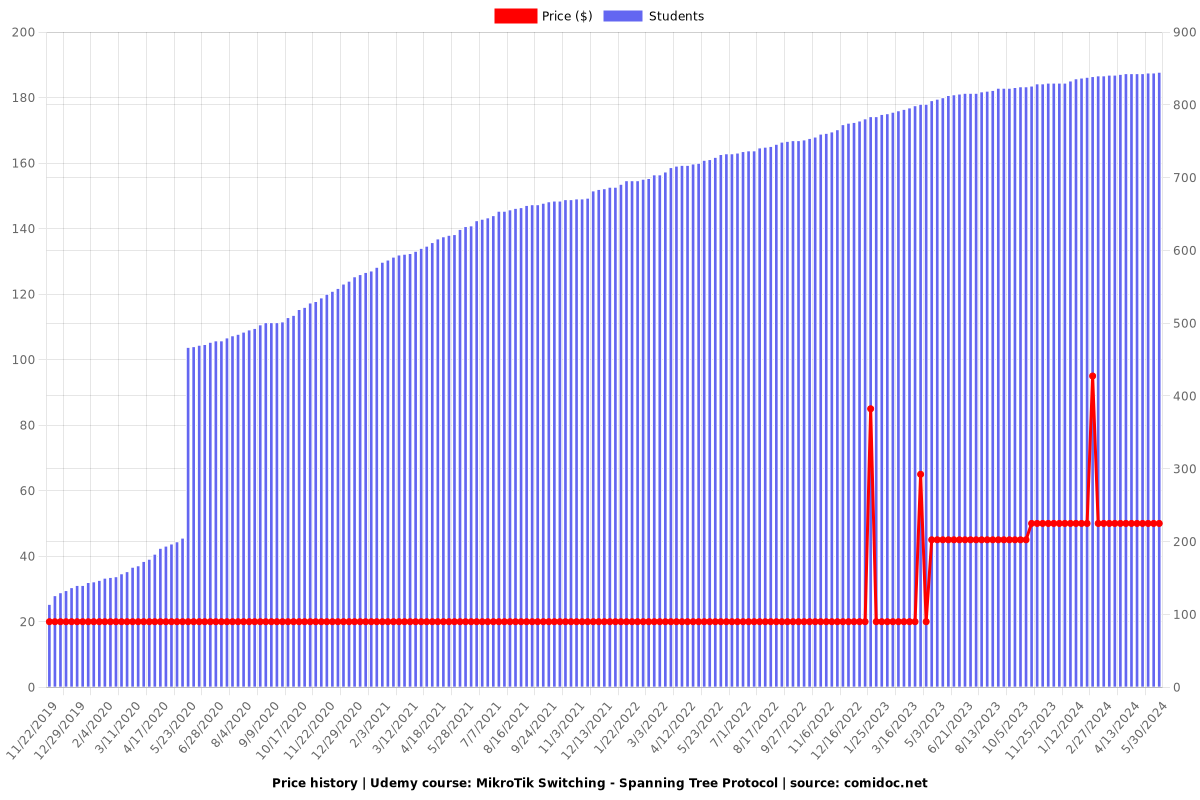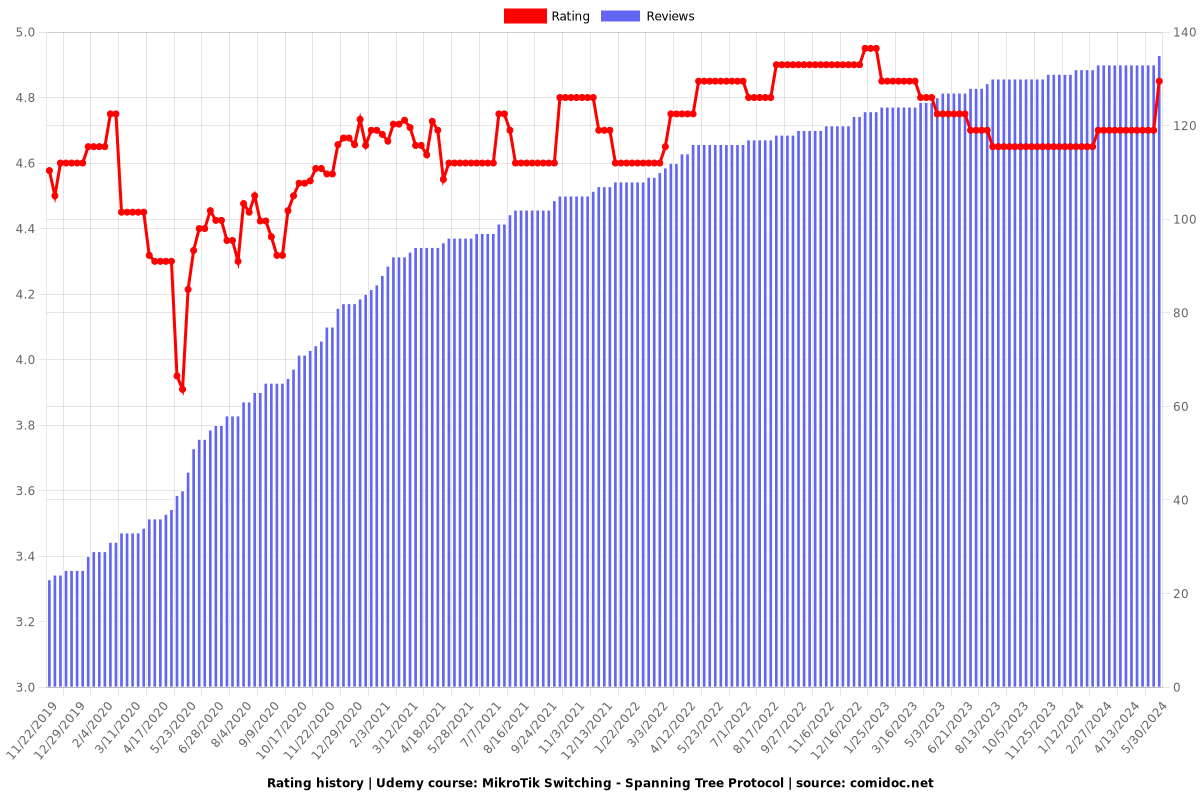MikroTik Switching - Spanning Tree Protocol
Have a loop-free switching network and understand how the Spanning-Tree Protocol works (STP, RSTP & MSTP)

What you will learn
Understand the broadcast storm problem in a redundant switching network in case STP is not used
Understand the multiple frames copies problem in a redundant switching network in case STP is not used
Understand the MAC address table instability in a redundant switching network in case STP is not used
Understand how the root bridge is being elected
Understand what is BPDU and its role in electing the root bridge
Understand what is the bridge ID
Understand how to change the priority in the bridge ID to change the selection of the root bridge
Understand the port roles: Designated, Root Port, Alternate, Disabled
Understand the port states: Listening, Learning, Forwarding, Blocking
Understand what the root path is and how to use it
Understand what is the port Auto-Isolate
Understand what is the port Restricted-Role
Understand what is the port Restricted-TCN
Understand what is BPDU-guard
Understand what is Topology Change Notification (TCN)
Understand how Rapid Spanning-Tree works
Understand what is the edge port
Uderstand the Negotiation mechanism in RSTP
Understand the edge and Point-to-Point ports
Understand the Region and Instances in MST
Why take this course?
This is the first course in the market discussing about switching in MikroTik. Since RouterOS version 6.41 and above, MikroTik has very reliable Switching features that you can profit from: One of the feature is the Spanning-Tree Protocol.
Spanning-Tree Protocol (STP) help your redundant switching networks to avoid having loops and to wok efficiently. Without STP your network would end up not working. In this course, I am going to discuss in details how STP works and what are its features, also I am going to discuss about the RSTP and the MSTP (MSTP is only available on RouterOS version 6.41+).
To be able to do the LABS in this course, you need 3 MikroTik routerboards having a switch chip, or you can use MikroTik CRS models. You also need 2 end devices such as PC's.
I look forward to see you in my course.
Screenshots




Reviews
Charts
Price

Rating

Enrollment distribution
